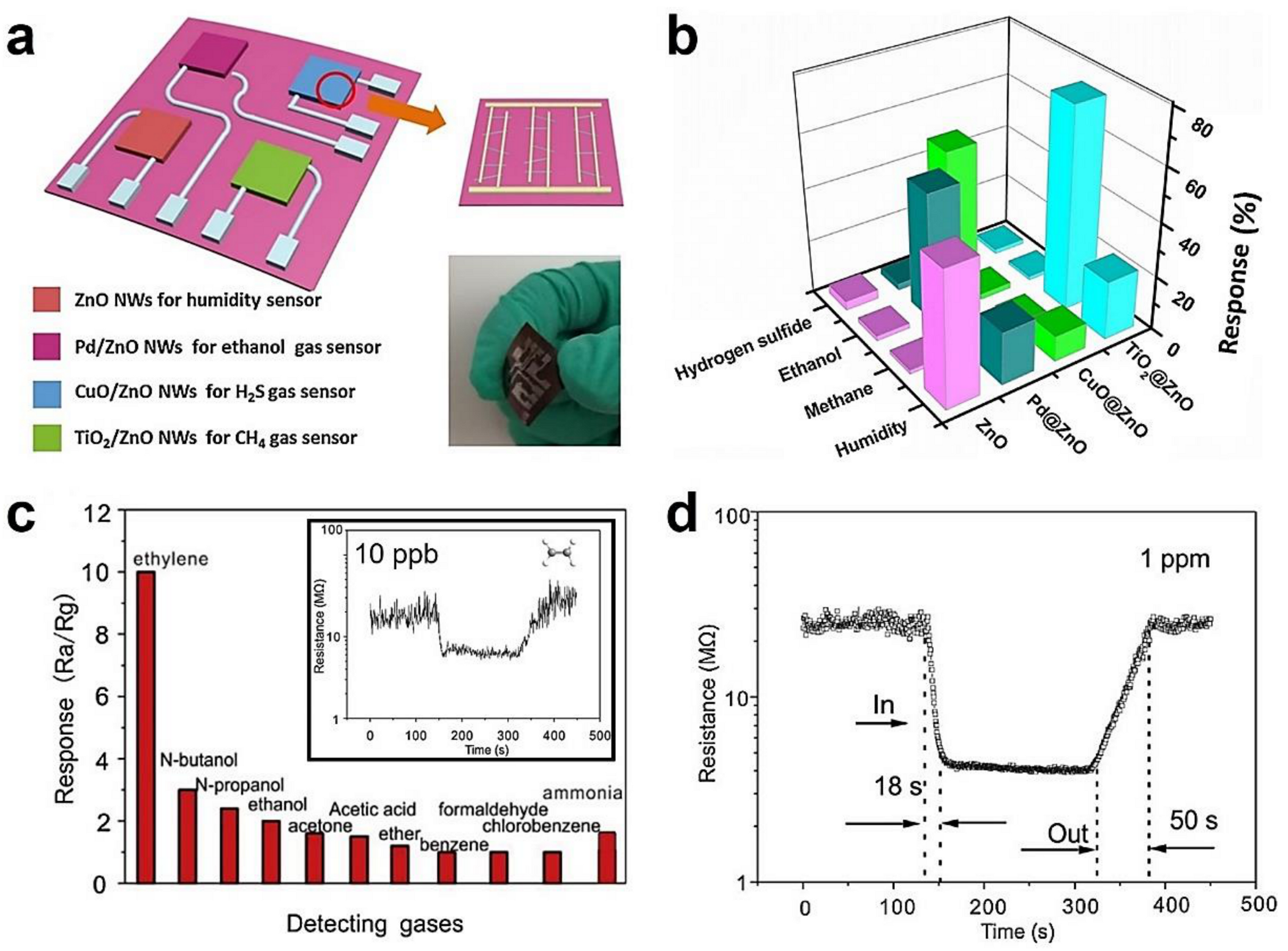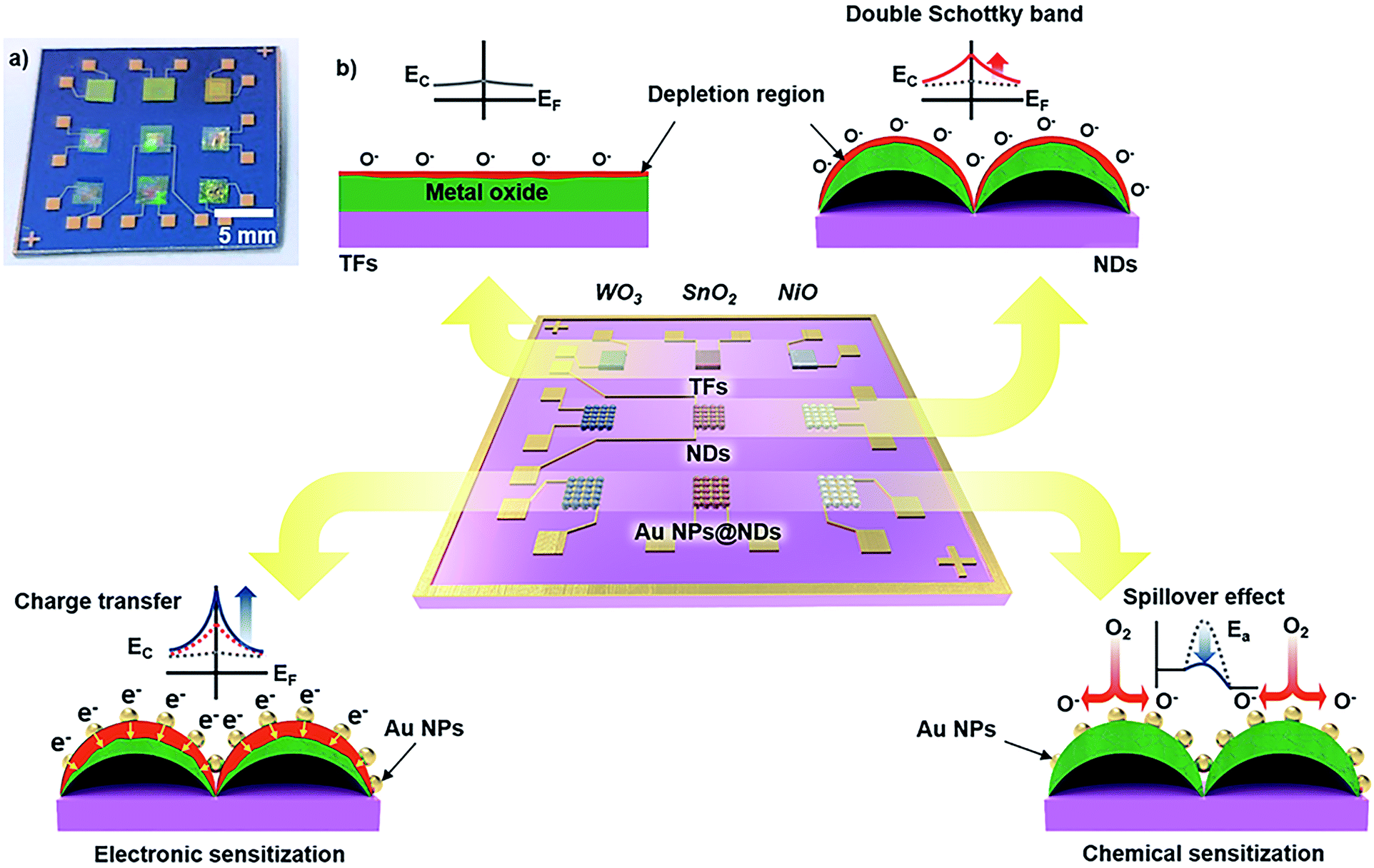The tin oxide foam samples showed different morphological. Tin Dioxide Semiconductor Gas Sensor for Refrigerant Detection HCFCs - SP-41-00.

Sensors Free Full Text Electrically Transduced Gas Sensors Based On Semiconducting Metal Oxide Nanowires Html
Simplicity of their use.

Tin oxide gas sensor. A tin oxide gas sensor as claimed in claim 6 in which the resistivity of the sensor is dependent on the concentration of several gases the dependence at differing measuring temperatures being such that by measuring the resistivity of the sensor at several different measuring temperatures the composition of a gas to which the sensor is exposed may be calculated. The conductometric semiconducting metal oxide gas sensors currently constitute one of the most investigated groups of gas sensors. Our society requires gas sensors for domestic automotive industrial applications due to the implication of gases in environmental control or dangerous emissions.
This was done by depositing the tin films onto gold contacts and then oxidising them by baking them at 250 C for 24 hours. An analytical comparison of gas-sensitive and non-gas-sensitive thin films. Large number of detectable gasespossible application fields.
Semiconductor gas sensor SnO2 based sensor chemiresistors are predominant solid-state gas sensors for domestic commercial and industrial application. The average sensitivity for different volume percentage of gas was estimated. In this work the temperature dependent gas sensing properties of tin-doped zinc oxide ZnOSn nanostructured films are investigated in detail.
Metal oxide resistive gas sensors are used in monitoring toxic gases as they offer very high sensitivity and relatively long-term stability. It is a promising material for many applications in various fields such as nanoscale electronics optoelectronics devices solar cells organic light-emitting diodes and flat-panel display devices 10 11. To improve the gas-sensing performance of tin oxide we successfully synthesized tin oxide foam via an ice-templating or freeze-casting method.
The two different contents of Sn in ZnOSn samples 01 and 04 at Sn and rapid thermal annealing RTA at 725 ºC were used in order to find out the optimal conditions for the highest gas sensing properties ie. The development of semiconductor-based gas sensors using tin oxide which is simple to implement low cost and offering good stability and sensitivity is discussed. Fast Download speed and ads Free.
Downloaded by rabinder henry at 1257 28 September 2015 1. Variations in resistance with exposure of LPG to the sensing element were observed. Problems of sensitivity selectivity and their modification are then considered.
Tin oxide sensors are made by mixing antimony bearing material with tin oxide powder and formation of the sensor by deposition of a slurry of the mixture onto a substrate and drying and sintering the slurry the antimony bearing material being present in an amount sufficient to render the sensitivity of the sensor to one or more of the gases H 2 CO or CH 4 relatively independent of the. Introduction oxide sensors have great advantages. They have attracted much attention in the field of gas sensing under atmospheric conditions due to their low cost and flexibility in production.
Higher gas response selectivity and lowest. The work also discusses a novel type of gas sensor derived based on the reviewed mechanisms and materials. The sensors were tested using a purpose built gas test rig.
The coalesced and granular tin films were used to fabricate tin oxide conducti-metric gas sensors. Download and Read online Novel Gas Sensors And Catalysis Based On Tin Oxide Materials ebooks in PDF epub Tuebl Mobi Kindle Book. SP-41 is a tin dioxide semiconductor gas sensor which has a high sensitivity to HCFCs eg.
Tin oxidegraphene composite fabricated via a hydrothermal method for gas sensors working at room temperature. L ow cost Easy production Rigid construction Compact size Simple measuring electronics. We noticed that the crystallinity did not influence the fact that gas sensing with our nanostructures can work at low temperatures.
Tin oxide gas sensors. Percentage sensor response as. An introduction to the tin dioxide SnO2 ceramic gas sensor and its electrical characterization is presented followed by details of some methods of active material preparation.
EP0806657A2 EP97111998A EP97111998A EP0806657A2 EP 0806657 A2 EP0806657 A2 EP 0806657A2 EP 97111998 A EP97111998 A EP 97111998A EP 97111998 A EP97111998 A EP. Get Free Novel Gas Sensors And Catalysis Based On Tin Oxide Materials Textbook and unlimited access to our library by created an account. 29 Sensors and Actuators 5 1984 29 - 42 THE TIN OXIDE GAS SENSOR AND ITS APPLICATIONS J WATSON Dept of Electrical and Electronic Engineering University of Wales Singleton Park Swansea SA2 8PP UK Received October 20 1982 in revised form May 4 1983 accepted May 17 1983 Abstract After a brief introduction to the operation of the semiconductor gas sensor details of.
Tin oxide sensors are disclosed having a resistivity that at a measuring temperature increases with concentration of at least one gas to be measured the sensors are made by calcining the tin oxide in air at a temperature in excess of 1400 DEG C or otherwise treating the tin oxide so that it has a state of physical aggregation consistent with being formed in such manner. Novel Gas Sensors And Catalysis Based On Tin Oxide Materials. R-22 with reduced sensitivity to other gases such as alcohol.
Non-stoichiometric tin oxide SnO 2x thin films are extensively used as gas sensors because of the availability of oxygen vacancies accompanied by other factorsOne of the ways to achieve better sensor performance is the incorporation of suitable additives in to the base material. The development of semiconductor-based gas sensors using tin oxide which is simple to implement low cost and offering good stability and sensitivity is discussed. Tin oxide is a commonly used gas-sensing material which can be applied as an n-orp-type gas sensor.
In this work polypyrrole coated tin oxide fibers have been synthesized using a two-step approach of electrospinning and vapour phase polymerization for the sensing of ammonia ethanol methanol 2-propanol and acetone vapours. The maximum value of average sensitivity was found 20 for 2 vol of LPG. That tin oxide crystalline formed at about 500C is in the form of SnO 2δ anon-stoichio-metric tin dioxide when the temperature is lower than 300C tin oxide crystalline will be in the form of SnO 15.
Tin oxide SnO 2 is one of these semiconductor oxides. Gas sensing of tin oxide. It was found that the sensors with the granular.
The basic measurand is the conductance of the sensor which means that the active material.

High Performance Carbon Monoxide Gas Sensor Based On Palladium Tin Oxide Porous Graphitic Carbon Nitride Nanocomposite Sciencedirect

High Performance Gas Sensor Array For Indoor Air Quality Monitoring The Role Of Au Nanoparticles On Wo 3 Sno 2 And Nio Based Gas Sensors Journal Of Materials Chemistry A Rsc
Tidak ada komentar